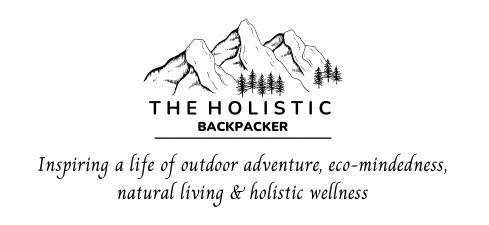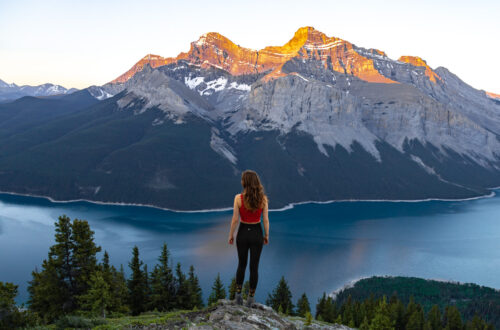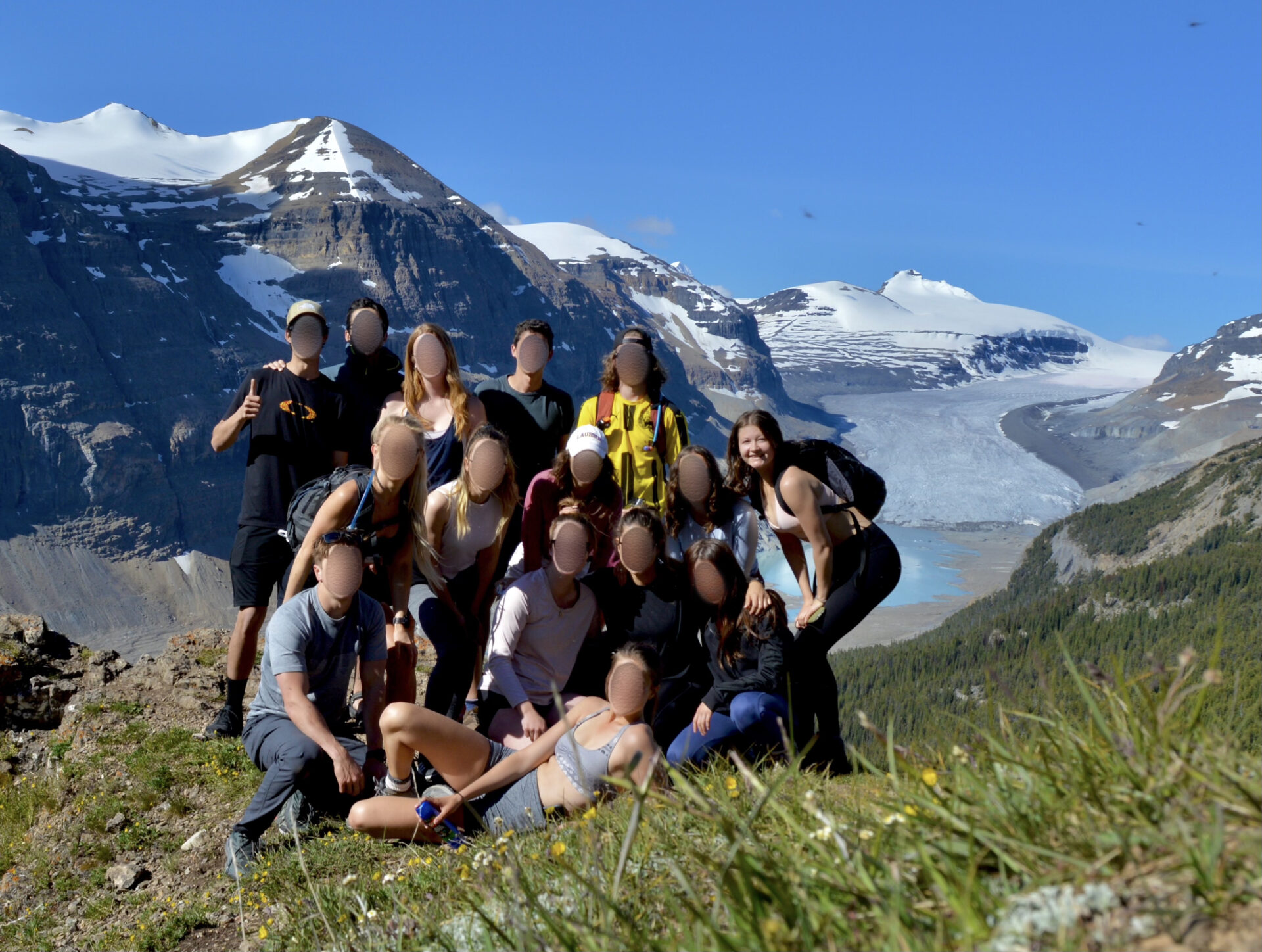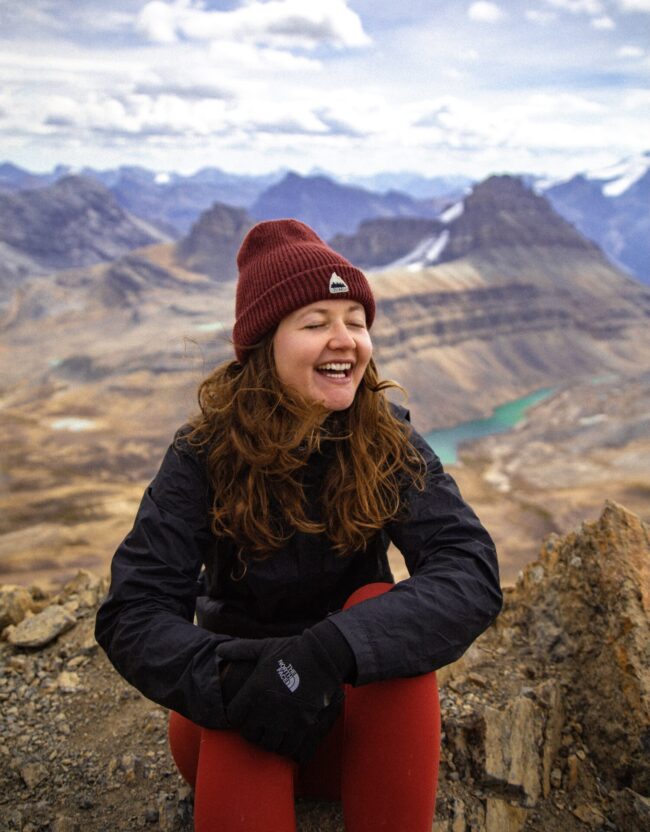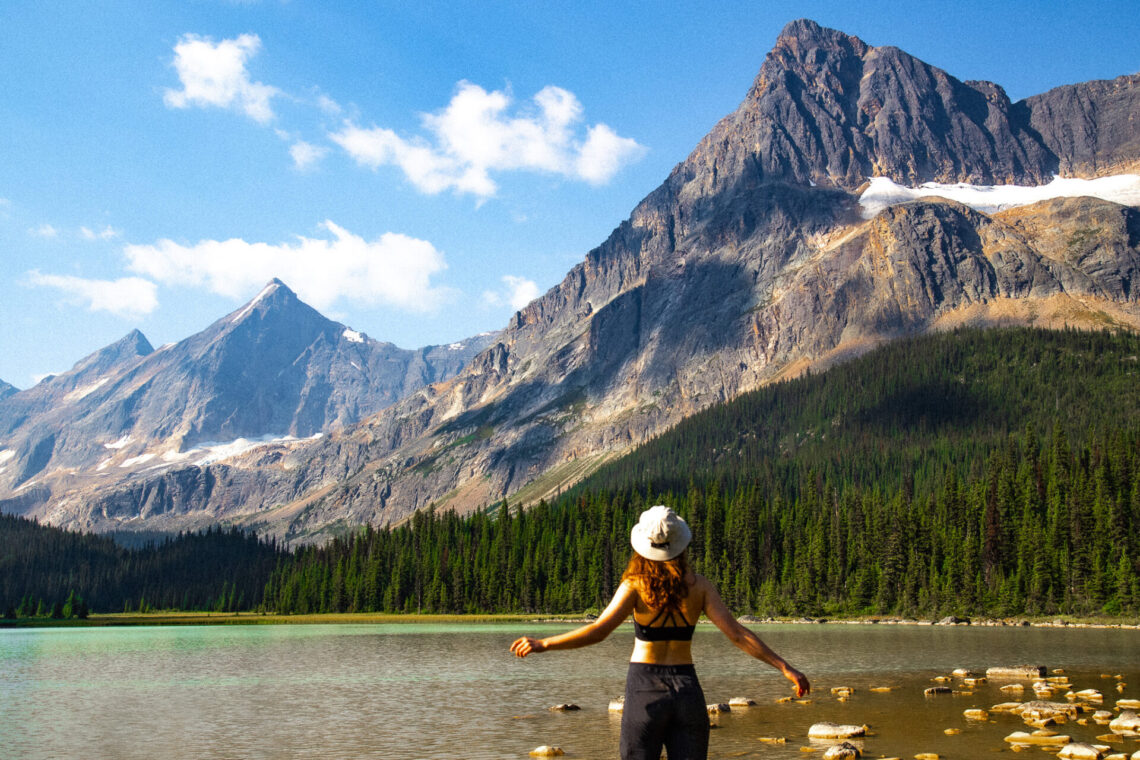
Travel & Camping with Contacts (Scleral/RGP/Soft) + Find Contact Solution Abroad
I’m a digital nomad which means I travel constantly and backpack for extended periods – sometimes years+ at a time. I also have advanced vision needs and have worn everything from soft contact lenses to RGP lenses to scleral lenses. Needless to say I’ve had to get real thrifty when it comes to travelling with contacts and finding contact solution abroad (Clear Care, AO Sept, Boston).
I’ve endured sleepless nights researching where to find international contact specialists, which countries deal with specific contact types, and how the HECK to find all the fancy-dancy contact solutions while I’m travelling.
In this post I’ll tell you everything you need to know about travelling with contacts lenses from sclerals to softs: what to bring, how to pack it, where to buy contact solution around the world, and much more. This post is a combination of my own experiences, things I’ve heard from other verified travellers, and medical professionals.
This post does not contain professional medical advice. I’m just an avid traveller sharing what resources and information I’ve collected along the way to help other travellers like you.
Skip ahead:
- Easiest countries to travel with contacts
- How to find international contact specialists
- Contacts + travelling support forums
- Contact travel kit – what to bring
- How to keep contact lenses clean while travelling
- How to keep contact lenses clean while camping
- Carry-on vs checked bag with contacts
- Can I wear contacts while flying?
- Where to find contact solution around the world + brand equivalents
How to travel with scleral lenses
As you read this post, please consider clicking the links throughout. These are affiliate links which means when you book a hotel or purchase a product, I make a small commission at no additional cost to you (full disclosure). These commissions fund The Holistic Backpacker and help me write more blog posts.
Thank you for supporting my work!
If you’re here solely to see where Boston Simplus, Clear Care/AOSept, and Lacri Pure can be found abroad – you can skip ahead.
Easiest Countries to Travel with Contacts
Some countries and even specific continents have more opticians/ophthalmologists available + contact solution varieties. If you’re looking to travel with contacts, the below will help you identify which countries are easy to travel with contacts and which countries may required advanced planning to travel with contacts.
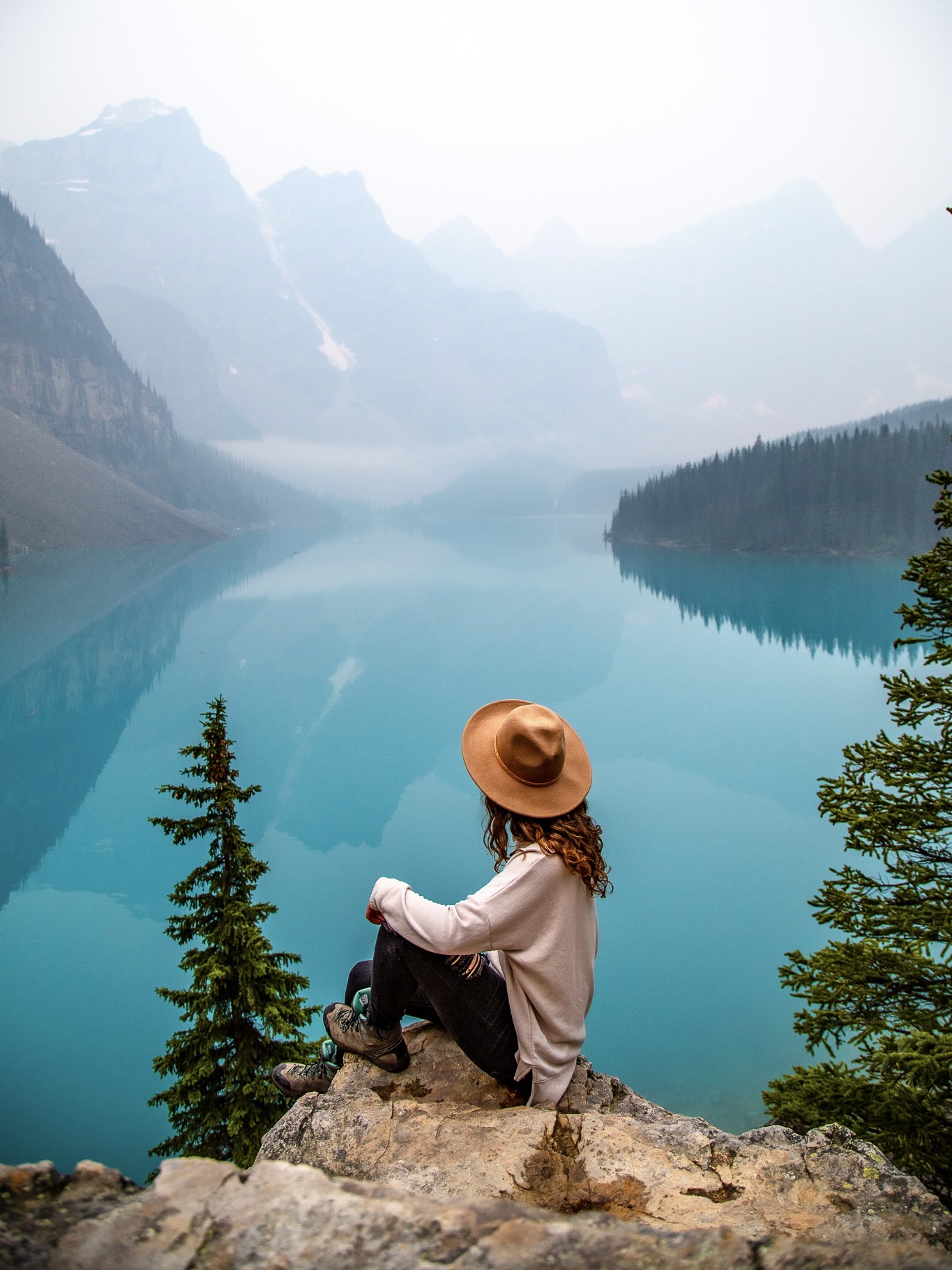
Travelling with Contacts in North America
If you’re from North America (like me) it’s obviously going to be easiest to travel domestically to ensure you still have high quality eye care available at all times. Bonus is that the doctors here will always speak English so you’ll have no communications barriers. Contact solutions and products of all types are easy to find in stores and online in North America too. Travelling with contacts in the US and Canada is stress-free.
ps – if you’re travelling to Canada, eye care professionals and contact fitters vary province-by-province when it comes to training. Ontario-trained contact specialists and eye care professionals have the most in-depth education and widest scope of practise.
Travelling with Contacts Abroad
Many trips take contact users abroad though – so what countries offer high quality eye care outside North America?
Many European countries have highly trained optometrists and ophthalmologists. Quality contact solutions are often available at pharmacies or apothecaries. If you’re striking out in general locations for contact solutions, head to a an optometrist office and you’ll be able to obtain almost anything there – or recommendations where to find what you need. The same goes for New Zealand and Australia in terms of care, however getting your hands on North American branded contact solutions may be a bit trickier.
If you’re in need of specialized eye care, contact fittings, and high quality contact solutions SE Asian countries can be difficult to travel. Although carrying large qualities of contact solution is heavy and takes up space, it’s recommended you bring everything you need. Asian Countries outside SE Asia are a bit more advanced. You may have better luck finding quality care and contact solutions in countries like Japan and China.
The same goes for South American and African countries. Specialized care is not as readily available and it’s near impossible to find contact solutions like Clear Care or AO Sept.
Keep in mind – seeking care abroad means you’ll likely encounter language barriers.
How to Find International Contact Specialists While Travelling
If you’re travelling and find yourself needing specialized care for something like scleral lenses or eye diseases the best approach is to go straight to local optometrist offices or hospitals. Here you can get specialized recommendations or referrals.
Some countries may also have their own database where doctors and their qualifications are listed online. I’ve looked for this in a few countries including Canada and the USA, but haven’t found anything overly helpful – please comment below if you know anything about this so I can update this post!
Contacts + Travelling Support Forums
Facebook “support” groups exist and they’re a great way to find information about travelling with contacts. I’m part of My Big Fat Scleral Lens on Facebook which I’ve found helpful when it comes to information like where to find Clear Care while travelling among other travel related questions.
These Facebook groups are great for getting questions answered on-the-fly, but it’s important to remember that the people supplying information in these groups are often not doctors. It’s a great starting point or place to generate ideas, but always check with an eye care professional before implementing new ideas or taking new advice.
Contact Lens Travel Kit – What to Bring
I always take more than what I need with me when I travel – especially if it’s to countries where supplies like contact solution may be harder to obtain. This extends to long-haul travel too.
One time for a 5 month backpacking trip to SE Asia I bought 28 weeks worth of Lacri Pure (preservative free contact solution) & multiple Clear Care bottles with me. It ate up all my backpack space and added tons of weight, but it needed to be done.

For all contact users:
- Contact case + a couple extras
- Contact solution of choice
- Contact cleaner of choice (Clear Care Plus and AO Sept are the gold standard, but the Boston Bausch & Lomb cleaner is great for RGP lenses)
- Clean towel for hand washing (situation dependent – more for hostel travel and camping)
- Goggles if you plan to snorkel or swim with your head submerged (I know, dorky)
For rigid lens users (RGP/scleral):
- Multiple extraction plungers (I use this kind for both RGP and scleral lenses)
- Multiple insertion plungers (I cut the bottom off these for easier scleral insertion)
- PROSE case if your scleral lenses exceed the normal size. Bring as many of these as you need for total length of travel – you WON’T find them abroad
- Container with lid to put contact tools in (plungers, cases, etc) for increased cleanliness
For Dry Eye
- These are my favourite eye drops for dry eye
- Update: I stopped using them as I found they were drying the skin around my eye and not helping. Maybe a change in formula?
- Bruder’s mask – I find this helps with tired eyes and eye strain in addition to helping unclog your meibomian glands
- I also use the tiny jade roller in this set to perform “eye massages” to stimulate my meibomian glands
- Wrap around sunglasses to block wind and dust. I love this pair from Oakley (smaller size for women). I actually have 3 pairs – best sunglasses ever for sport and eye comfort!
The best place to purchase contact solutions and tools like this are Amazon. The Dry Eye Shop also has some great options, but they do not ship internationally outside the USA except for Canada. I spoke with a sales associate and they said shipping to Canada could take weeks.
Dark/Puffy Circles Around your Eyes?
I always pack this tiny roller bottle which I fill with a mix of Jojoba, Frankincense, and Castor Oil. I apply it around my eyes each morning and use the jade roller linked above to massage it in. This helps reduce water retention and puffiness around the eyes plus brightens the light circles.
How to Keep Contact Lenses Clean While Travelling
I bring one small container for every bag I’m travelling with to store all my contact essentials in: cases, plungers, etc (one “supply set” for each bag so I’m not constantly switching things around). In order I open the container, wash my hands, then touch the items in the case to deal with inserting/extracting contacts. At no point in time does any contact-related device touch anything outside the interior of the container. In the evening I disinfect lenses as per usual with Clear Care or AO Sept.
ps – scleral users, this little container is the perfect size for plungers and single-use Lacri Pure solutions – this way they don’t spill or come into contact with unclean surfaces throughout the day
If you use plungers to insert/extract your contacts, they should get a clean every once in a while too. The best way to do this is to add a splash of bleach to a generous amount of water and let them sit for 15 minutes (according to my optometrist).
I unsurprisingly don’t travel with bleach, so instead I squirt some clear care on them while they sit on a paper towel. I let them rest for a few minutes, then use bottled water (or tap water depending on what country I’m in) to rinse it off. I then let them air dry in my container with the lid off.
How to Keep Contact Lenses Clean While Camping
In addition to being a digital nomad I’m also a huge hiker and spend a significant amount of time both front country and backcountry camping. I’m contacts worst nightmare – or vice versa, I guess.
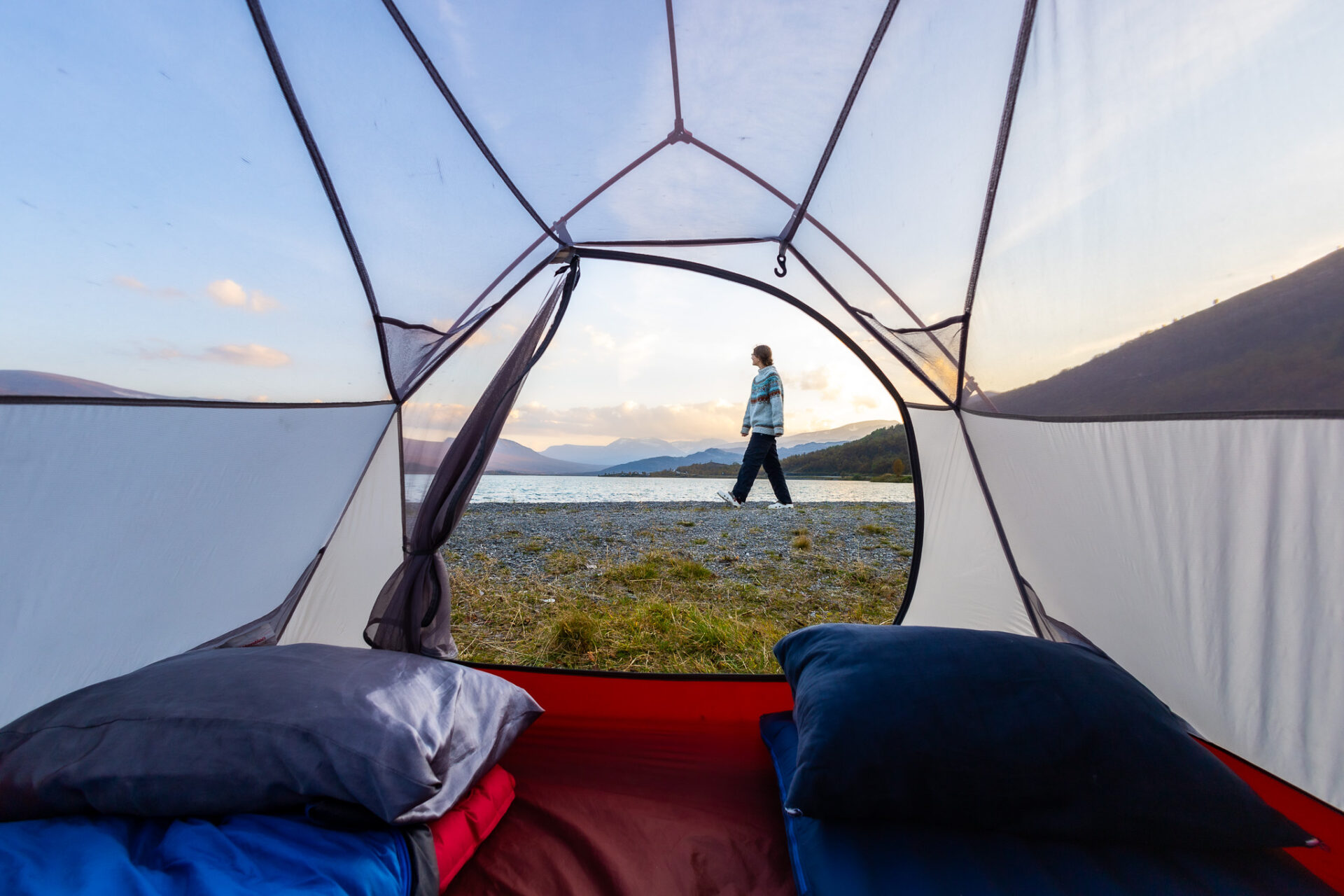
Front Country Camping with Contacts
I won’t lie, I’m not as great at keeping my contacts clean while camping. If I’m front country camping in a campground I take advantage of the bathroom facilities and approach cleaning my contacts as normal – exactly the same as my travel cleaning protocol above.
If I’m road tripping + free camping I try to camp near places with public bathrooms (ie. gas stations, cafes, or grocery stores with public facilities) so I can take them out in the evening, then put them back in the following morning in a place with running water. If I’m in remote areas I follow the backcountry cleaning protocol below.
Backcountry Camping with Contacts
In the backcountry keeping contacts clean is a struggle. Soft lenses are a bit harder to deal with as they’re prone to collecting bacteria and can easily cause eye infections – dailies are easiest to handle as they’re tossed each night. Monthlies or weeklies need to undergo daily cleaning. With rigid lenses I feel a bit more comfortable “taking my chances” as the material of the lens won’t absorb bacteria – it still can however transfer bacteria into your eye. If you’re camping with contacts bring travel size contact solutions and 2 sets of each plunger type stored in a different place (for rigid lens wearers) – just in case you lose one.
Hand washing process – I typically bring a small, breathable bag to put a clean towel in. In order I open my contact case, then wash my hands with soap in a nearby water source OR bring an extra water bottle used only for hand washing (I know, heavy). Once I wash my hands I put the towel back in the sterile bag or hang it on a clothesline – ONLY if it won’t touch other surfaces.
For soft/hard/scleral contacts in the backcountry – I follow the hand cleaning protocol above and carry plungers + Lacri Pure (for scleral wearers) in this little container. I transfer Clear Care into a smaller, travel size contact bottles and disinfect the contacts each night as normal.
It’s not an easy life, but I won’t let wearing contacts stop me from doing what I love. I also refuse to wear glasses hiking (lol).
Carry-On vs Checked Bag with Contacts
Everyone knows the general carry-on liquid allowance rule – 3.4oz (100ml) in a 1 quart size bag.

In North America you can generally get away with bringing more contact solution in your carry-on than the allowed amount as it’s deemed medically necessary. TSA has created this rule (more information about it here) but CATSA (Canada’s version of TSA) generally follows any rule TSA creates.
You can pack as much contact solution, eyedrops, or new sets of contacts in your carry-on as you want according to the CATSA officer I spoke with on the phone. She however did say the on-duty TSA/CATSA officers at will make the final call on whether they’ll allow you to bring extra through security. She said to put up a fight and emphasize the “medically necessary” part if they give you trouble. Don’t just roll over.
Update: I asked a CATSA agent about this at the Calgary airport in December of 2024 and they confirmed it to be true
Unfortunately this rule only applies to USA/Canada. Once you fly to Europe or Asia, the security officers are notorious for snatching any amount of contact solution over the usually carry-on limit – even if it’s medically required. If you’re travelling outside the USA/Canada it’s best to bring as much contact solution or sets of eyes possible in the allotted carry-on amount, then checking the rest. Make sure the most important bits come with you.
Can I Wear Contacts While Flying?
This answer is different for everyone. Oftentimes contact users experience discomfort when wearing contact lenses while flying due to dry airport and cabin air. I personally wear my contacts through the airport, take them out right before my flight, then reinsert them before heading to baggage claim or leaving the airport.
My eyes are dry enough as is and I personally prefer to not make them any more uncomfortable than they need to be. On long haul flights I use these rewetting drops every hour or so for added comfort.
What Travel Activities can I do With Contacts?
Soft contact lenses are more susceptible to infection than rigid lenses which means soft lens wearers to be more careful around water and cleanliness in general.
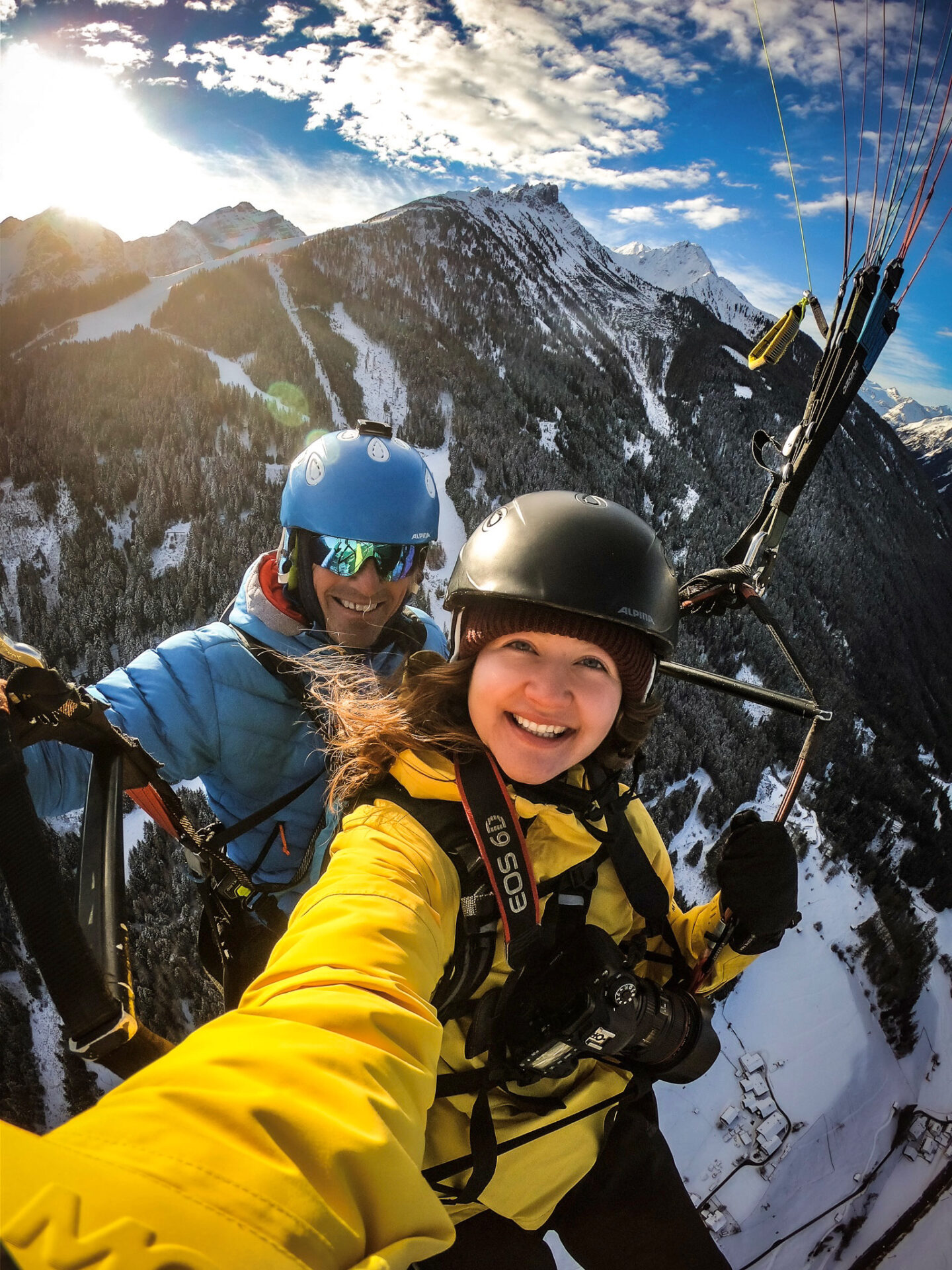
Showering and swimming are not recommended with contacts in, especially for those with soft lenses. I personally do wear my RGP and scleral lenses while swimming and showering (as long as I’m not washing my hair), but I pay careful attention to avoid splashing, putting my head under, or activities like water skiing, cliff jumping, etc. This way my chances of losing a contact in the water are minimal.
The same goes for diving and snorkelling. As long as no water enters your mask there’s not necessarily a risk of infection, but you can’t always guarantee you won’t need to clear your mask while under water.
For sports like skiing you should have no issues wearing your contacts. There is of course the slim chance RGP or scleral lenses could break on impact, but that is rare and more due to direct eye impacts rather than general head bumps. I always recommend wearing both a helmet and goggles at all times while skiing. Be aware that RGP lenses can potentially displace themselves after a head bump and end up moving to the edge of your eye. This isn’t the end of the world, but it can be uncomfortable and somewhat challenging to fix. Afterwards your eye is likely be scratched leaving you unable to wear the lenses for a few days.
Where to Find Contact Solution Around the World + Brand Equivalents
This section is a combination of what I’ve read from other travel blogs, heard from other travellers, and seen in person myself. I’ll continually update this post as I find more information.
If you’ve seen Boston Simplus or Clear Care/AO Sept anywhere in the world or have found a way to order Lacri Pure abroad – please comment below so I can keep this post up-to-date.
Clear Care / AO Sept
Clear Care is identical to AO Sept Plus (not the same as the general AO Sept). The general AO Sept lacks the surfactant that loosens protein from the lens surface.
North America (Canada/USA)
In North America (Canada/USA) Clear Care can be found in basic pharmacies as well as in most grocery store’s pharmaceutical sections.
Europe
Clear Care and AO Sept in Europe is usually available at pharmacies and/or optometrist offices. These locations have been confirmed by myself or by other travellers:
- Italy: Italian Optic
- UK: most Boot’s pharmacies carry AO Sept
Asia
Although shipping times can be unpredictable, in many Asian countries you can order Clear Care and AO Sept online from marketplaces like Shopee and Lazada to a local address (ie. to a PO Box or hotel). Shopee and Lazada are Asia’s version of Amazon.
For in-store options, you can find Clear Care or AO Sept in Asian countries, specifically at the following:
- Thailand: Boots pharmacy in Chiang Mai (verified). Apparently also available at other Boot’s pharmacies around the country
- Taiwan: Watson’s pharmacy
- Vietnam: Hanoi Medical University Hospital — Eye division
- Seoul: Lotte Mart
- Malaysia: AA Pharmacy and Guardian
- Malaysia Caring Pharmacy in Kuala Lumpur and Watson’s in Penang
- Indonesia: Top Optical in Seminyak; Yava Optical in Canggu (Bali)
You can apparently also find Clear Care / AO Sept in the following Asian countries or cities: Hong Kong, Tokyo, and Singapore.
South America
Apparently you can find Clear Care in Mendoza, Argentina.
Oceania
In both New Zealand and Australia you can find Clear Care at the Chemist’s Warehouse.
Boston Simplus
North America (Canada/USA)
In North America (Canada/USA) you can find Boston Simplus everywhere. Grocery stores, pharmacies, and optometrist offices all carry it.
Europe
In Europe you can usually find Boston Simplus in pharmacies and apothecaries. Some exceptions apply in developing countries (ie. Albania). In these cases plan to bring the necessary quantity of Boston contact solution with you, or visit local optometrist offices to inquire about where you can find it in person. Here are a few verified pharmacies/countries where you can find Boston Simplus in Europe:
- Netherlands: you can find Boston Simplus at Etos and Kruidvat which are big chain apothecaries. These shops are found everywhere, including transit stations and airports.
- UK: Most Boots pharmacies carry Boston Simplus.
Biotrue (Bausch & Lomb)
For soft contact users this is where you can find Biotrue abroad – this is my favourite solution for soft lenses.
North America (Canada/US)
You can find Biotrue by Bausch & Lomb everywhere in Canada and the USA. Grocery stores, pharmacies, and optometrist offices all carry it.
Europe
In Europe Biotrue by Bausch and Lomb is fairly easy to find. It’s however commonly more available in apothecaries or at optometrist offices rather than general pharmacies or grocery stores.
- Austria: Arlberg Apotheke in St Anton
Where to Buy Lacri Pure Abroad
If you’re a scleral user you’ll need Lacri Pure preservative free contact solution (or an equivalent) which is difficult to get while travelling. As of now, the best way to get Lacri Pure while travelling is via Canada and USA Amazon.
Keep in mind it can be difficult to get Lacri Pure shipped abroad from Amazon – I’ve tried from both American and Canadian Amazon with no success to Asian and European countries. Amazon would simply not send the contact solution abroad from the checkout screen and would not supply a specific reason as to why. You could always try having a family member send it from home using your local post service instead.
As I result I carry 6 months worth of Lacri Pure with me for long-haul travel and the exact amount I need for shorter trips – especially if I’m visiting countries where it’s near impossible to get high quality contact solution (like in SE Asia). This unfortunately eliminates the ability to travel light or carry-on style (which is extremely difficult as a backpacker), but as of now there seems to be no way around the whole “finding Lacri Pure abroad” issue.
Happy adventuring!
Taylor ♡
Like This Post?
Share with friends or save it for later!
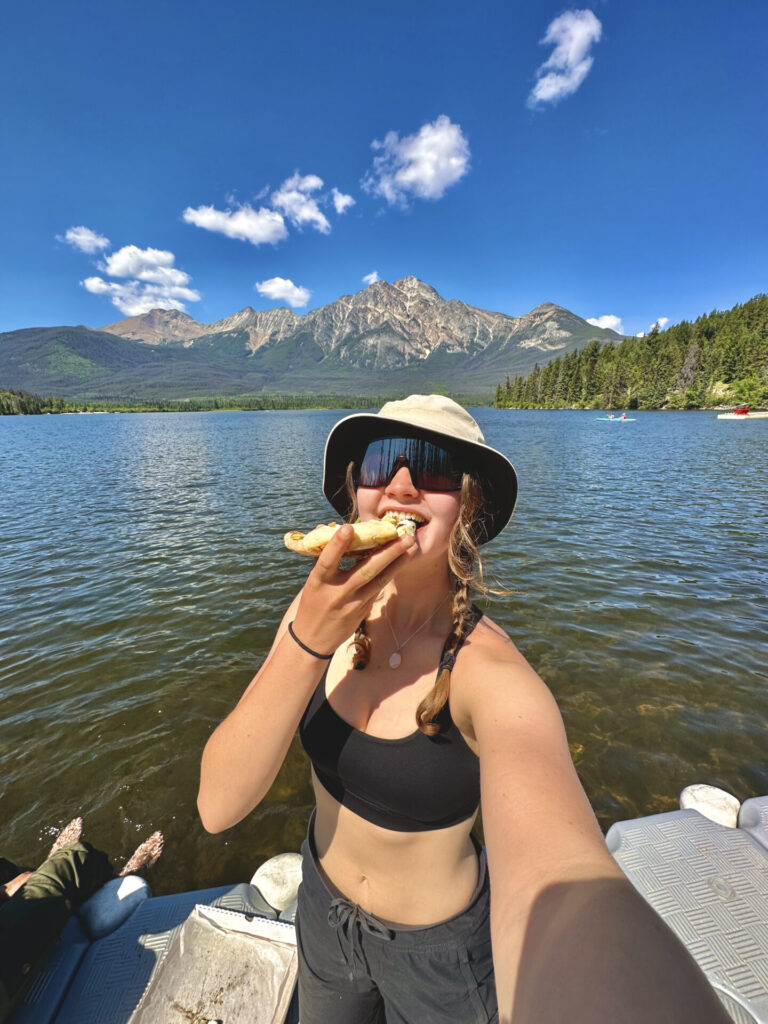
About the Author
HI, I’m Taylor – the voice behind The Holistic Backpacker.
After moving to Banff National Park in 2020 I became an outdoor adventure enthusiast and vowed to never stop exploring.
I now spend my days travelling the world, climbing mountains, and spending nights under the stars in the Canadian Rockies backcountry.
I created The Holistic Backpacker so I could share my adventures and help connect people like you with the same amazing experiences.


